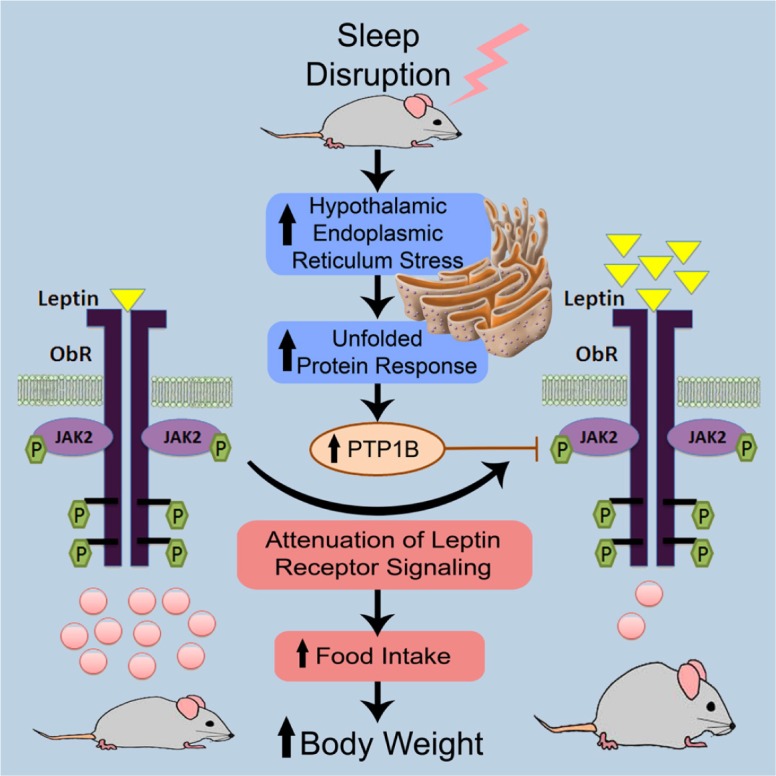Figure 5.

Schematic diagram illustrating the putative pathways underlying the emergence of increased food consumption in mice subjected to sleep fragmentation during their circadian sleep period. As illustrated on the left side, under control conditions, leptin (yellow triangles) activates the leptin receptor signaling via the JAK/STAT cascade, which elicits STAT3 (pink circles) binding and translocation into the nucleus to act as a transcription factor by binding to specific response elements in the promoter of its target genes, aiming to inhibit food desire. Upon the introduction of sleep fragmentation, endoplasmic reticulum (ER) stress is induced, driving the activation of the unfolded protein response (UPR) ultimately leading to increased expression and activity of PTPB1. As shown on the right side, those changes are accompanied by decreased leptin receptor sensitivity in the hypothalamus, which is evidenced by the accumulation of leptin (yellow triangles), along with lower expression of STAT3 (pink circles), manifesting as increased food consumption, the latter ultimately promoting the emergence of obesity. JAK2, Janus kinase 2; ObR, leptin receptor; P, phosphorylation; PTP1B, protein-tyrosine phosphatase 1B; STAT3, signal transducer and activator of transcription 3.
